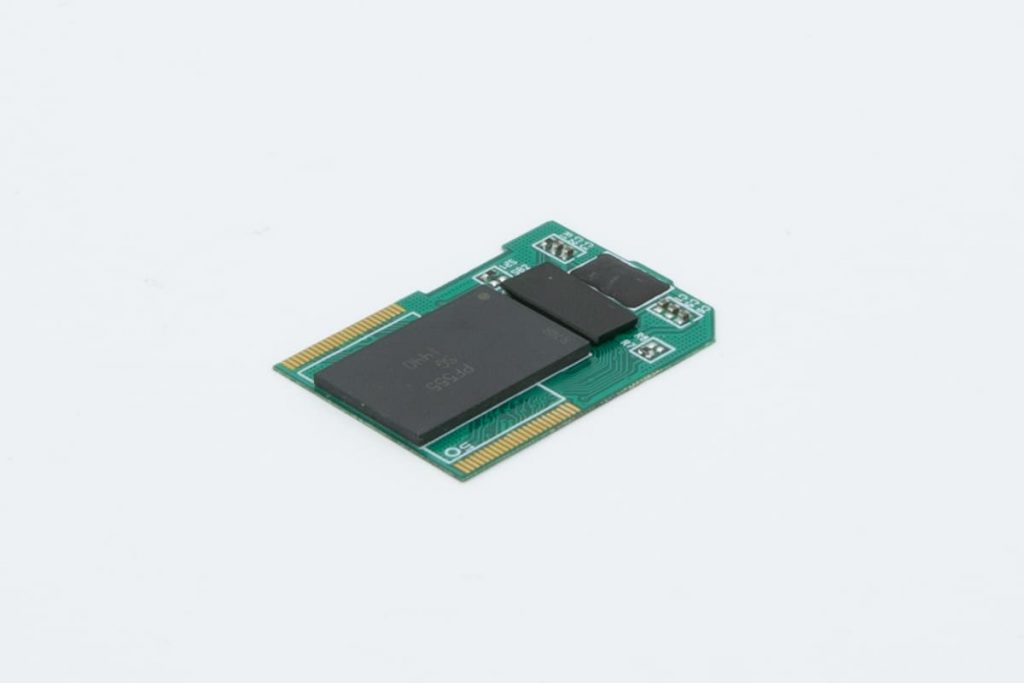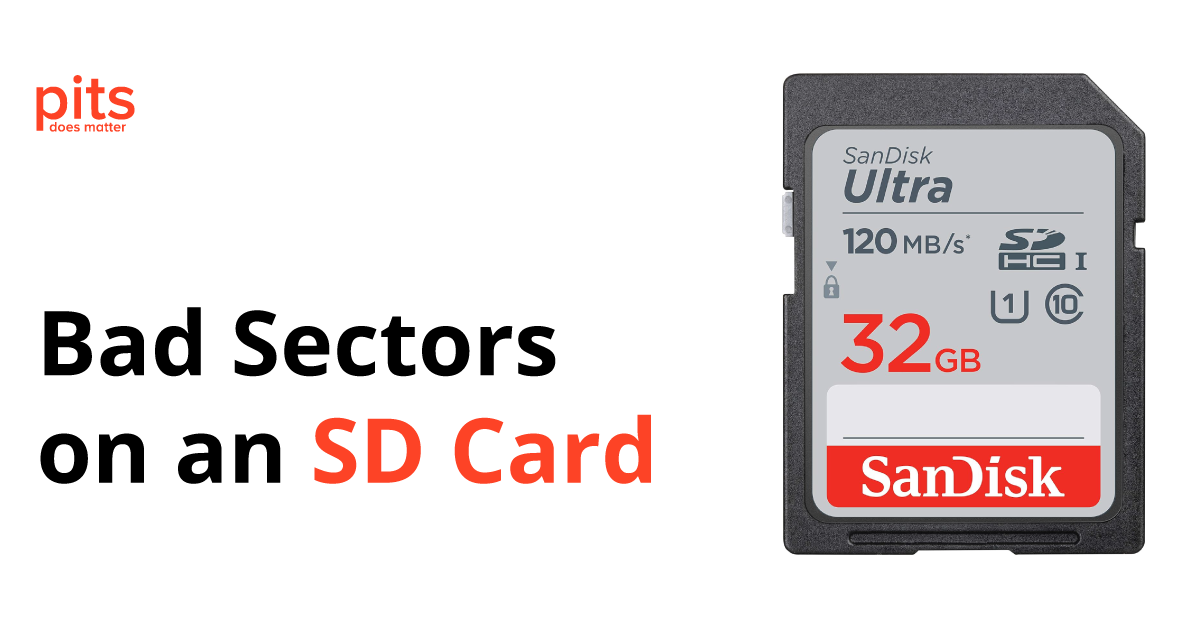Bad sectors on an SD card is a problem that could disrupt your digital life, leading to potential data loss and inconvenience. This issue, while seemingly technical and intimidating, is something that anyone using digital devices might encounter.
In this blog post, we’ll delve into the nature of bad sectors on an SD card, exploring what they are, how they develop, and the steps you can take to address this issue. So, whether you’re a seasoned tech enthusiast or a casual user, this guide will help you understand and resolve the problem of bad sectors on your SD card.
What is a Bad Sector?
A ‘bad sector’ refers to a section of the storage device inaccessible or unreadable due to permanent damage. This damage can be a result of physical harm to the storage device or due to software errors. Regarding an SD card, a ‘bad sector’ implies an area of the card that the connected device cannot read or write on.
This can result in data loss or corruption, as the information stored in these bad sectors can become inaccessible or be lost permanently. Therefore, understanding and addressing bad sectors is crucial in maintaining the integrity and longevity of your SD card.
Reasons for Bad Sectors to Appear
There are several reasons why bad sectors can develop on an SD card. Some of the common causes include physical damage, software errors or malware infections, and faulty manufacturing. Dropping or exposing your device to extreme temperatures can cause physical harm, leading to bad sectors. Similarly, if your device is infected with malware, it could result in corrupted data and damaged sectors of your SD card. Finally, in some cases, bad sectors can result from faulty manufacturing or wear and tear over time.
Physical Damage
Dropping or mishandling an SD card can result in physical damage, such as scratches or bends, which may lead to the formation of bad sectors.
Age and Wear
Over time, SD cards can undergo wear and tear due to repeated read and write operations, leading to the development of bad sectors.
Manufacturing Defects
Occasionally, SD cards may have defects present right from the manufacturing process, which can manifest as bad sectors.
Environmental Factors
Exposure to extreme temperatures, humidity, or magnetic fields can also contribute to the appearance of bad sectors.
Signs of Bad Sectors
Detecting bad sectors early on is crucial for preventing potential data loss or device malfunctions. Look out for the following signs that may indicate the presence of bad sectors on your SD card:
Slow Performance. If your SD card takes longer than usual to save, access, or transfer data, it could be a sign of bad sectors affecting its functionality.
Frequent Error Messages. If you consistently encounter error messages like “disk error” or “corrupted file,” it’s possible that bad sectors are interfering with data retrieval.
File Corruption. Files becoming inaccessible, displaying incorrect data, or suddenly disappearing altogether could indicate the presence of bad sectors.
System Crashes. A device experiencing sudden crashes or freezing when accessing the SD card may be an indication of underlying issues, including bad sectors.
How to Check for Bad Sectors on an SD Card
Regularly scanning your SD card for bad sectors is a proactive approach to maintain its health and prevent data loss. Here are a few methods to perform SD card bad sectors check:
Built-in Operating System Tools. Most operating systems provide built-in disk-checking tools that allow you to scan and repair storage devices. On Windows, you can use the Error Checking tool (accessible through the Properties menu), while macOS offers the First Aid feature in Disk Utility.
Third-Party Software. Numerous third-party tools, such as CrystalDiskInfo, HDDScan, or H2testw, are available for assessing and diagnosing bad sectors on SD cards. These tools often provide detailed reports and options for repairing or recovering data.

Command-Line Utilities. Advanced users can utilize command-line utilities like chkdsk on Windows or fsck on macOS and Linux to scan and repair bad sectors.
While SD cards provide portable and convenient storage for our digital lives, encountering bad sectors can be an unwelcome setback. Understanding what bad sectors are, their causes, and the signs indicating their presence is essential for timely detection and action.
Regularly checking SD cards for bad sectors using built-in tools, third-party software, or command-line utilities can help identify and resolve issues early on, ensuring the longevity and reliability of your storage medium. Remember, prevention and proactive management are key to maintaining the integrity of your SD card and safeguarding your valuable data.
Expert Solutions for SD Cards with Bad Sectors
At PITS Global Data Recovery Services, we understand the frustration that can arise from encountering bad sectors on an SD card. As a leading data recovery company, we specialize in providing professional and reliable solutions for recovering data from SD cards with bad sectors. Our team of highly skilled technicians and state-of-the-art facilities enable us to tackle even the most challenging data recovery scenarios.
Our experienced technicians employ specialized data recovery techniques tailored to the specific characteristics of SD cards. We utilize advanced tools and proprietary software to bypass and recover data from the affected sectors. With extensive knowledge and expertise in handling various file systems, including FAT, exFAT, and NTFS, we can effectively extract your valuable data while minimizing further damage to the card.
What Our Clients Say About Us
We understand the importance of data privacy and take stringent measures to ensure the confidentiality and security of your recovered data. Our facilities are equipped with cutting-edge security systems to protect your sensitive information. Additionally, we adhere to strict confidentiality agreements and industry best practices to safeguard your data from unauthorized access or disclosure.
When faced with an SD card containing bad sectors, entrusting your data recovery needs to a professional service provider like PITS Global Data Recovery Services is crucial. With our expertise, advanced techniques, and commitment to quality, we strive to recover your valuable data from SD cards with bad sectors, ensuring minimal downtime and maximum peace of mind. Contact us today to learn more about our services and let our skilled team recover your important data from problematic SD cards.
Frequently Asked Questions
Will formatting the fix bad sectors on SD card?
Formatting an SD card erases all data and file structures on the card but does not specifically repair bad sectors. However, in some cases, formatting can help isolate and bypass the bad sectors, allowing the card to function normally again. Remember to backup your important data before formatting an SD card.
Can bad blocks on an SD card lead to data loss?
Yes, bad sectors on an SD card can cause data loss. When a sector becomes unreadable or corrupt, any data stored in that sector may become inaccessible or get corrupted. It is crucial to regularly back up your data to minimize the risk of permanent loss due to bad sectors.
How can I prevent bad sectors on my SD card?
While it is impossible to prevent bad sectors entirely, you can take certain measures to minimize their occurrence. These include handling your SD card with care, avoiding physical damage, keeping it away from extreme temperatures or humidity, and using reliable devices for reading and writing data. Additionally, periodically checking the health of your SD card and addressing any issues promptly can help prevent further damage.
Should I continue using a memory card with bad sectors?
It is generally not recommended to continue using an SD card with bad sectors, especially if you frequently encounter data corruption or other issues. Bad sectors can spread over time, leading to further damage and increased risk of data loss. It is advisable to replace the SD card with a new one to ensure the safety of your data.
Can I recover data from an SD card with bad sectors?
Data recovery from an SD card with bad sectors can be challenging. However, there are professional data recovery services available that specialize in retrieving data from damaged storage devices. It is essential to stop using the SD card immediately and seek professional assistance to maximize the chances of successful data recovery.
